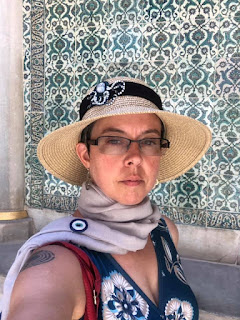Cell phones are NOT the problem

TL;DR: New technologies & methods have always been resisted, especially in education. Students starting kindergarten now will live into the year 2100. Technology makes teaching and learning easier and better. Lots of apps support student learning, creativity, & communication. Passing notes, spacing out, & skipping class were the cell phones of the past. Cell phones are a part of the "real world." Proactively address cell-phone use & etiquette Explicitly teach phone etiquette and active listening behaviors Deliberately integrate cell phones into your teaching & learning strategies Create an expectation in the classroom that students are responsible for their learning Address cyberbullying and mental health issues head on Create balance and options, i.e. personalize , student learning Don't cripple the future by irrationally holding on to the past. Jonathan Haidt just dropped an exquisitely well-researched article in the Atlantic entitled "Get Phon

